Did you know that accidental ingestion of human food is among the leading causes of canine vet emergencies? Even a small amount of the wrong food can be poisonous to dogs—and some toxic foods are hiding in your kitchen right now.
Every year, thousands of dogs are rushed to emergency vets because they ate something hiding in plain sight—ordinary foods that are perfectly safe for humans. But what foods are toxic to dogs? If you think a “small amount” can’t hurt, think again: just one grape or a tablespoon of xylitol can trigger organ failure or worse . This guide will help you spot kitchen dangers, understand why some foods become household hazards, and take simple, science-backed actions to keep your best friend safe.
- Learn the top foods toxic to dogs and why they are dangerous.
- Avoid common mistakes pet owners make with human food.
- Gain science-backed explanations to keep your dog safe.
- Access expert tips on what to do if your dog ingests a toxic food.
Understanding What Foods Are Toxic to Dogs: Protecting Your Pet from Common Household Hazards
When it comes to what foods are toxic to dogs , even the most attentive owners can accidentally put their pets at risk. The problem is that many everyday ingredients found in human food are toxic to dogs—even in “tiny” or “small amounts.” While chocolate and grapes are notorious, dangers lurk everywhere: bread dough rising on the counter, an open bag of macadamia nuts, or an innocent piece of sugar-free gum. Each year, thousands of emergency calls to vets start because a dog has eaten something toxic—often from kitchen counters, festivity leftovers, or accidental spills.
The search intent for “what foods are toxic to dogs?” is critical—pet parents need actionable knowledge, not just lists. By knowing which foods are dangerous for dogs and exactly why they cause trouble, you can spot threats early and respond quickly in emergencies. For example, knowing that xylitol (found in many sugar-free products) acts fast and even a crumb can cause liver failure is the difference between life and death. Let's break down the science and the most common mistakes—so you can create a safer home, one meal at a time.
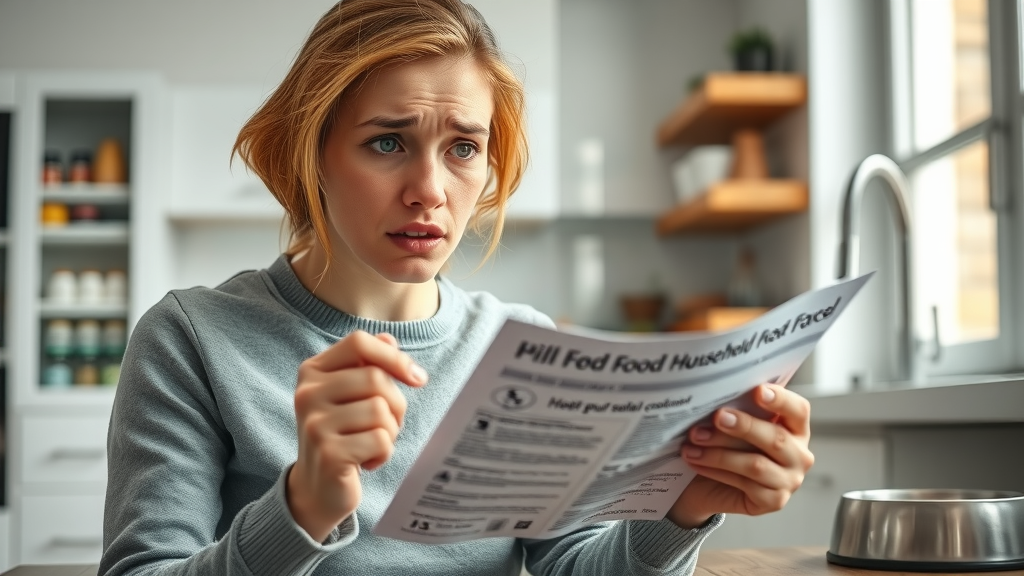
The Science Behind What Foods Are Toxic to Dogs: Why Canines React Differently to Human Foods
Many people wonder why foods that are harmless to us are highly toxic to dogs. The answer lies in the unique physiology and digestive system of our canine companions. Some compounds in human food are processed differently—or not at all—by a dog’s body, leading to quick onset of toxic effects. This is more than just “an upset stomach;” certain foods can cause multi-organ failure, seizures, or death within hours.
Humans have enzymes and metabolic pathways that efficiently break down certain sugars, fats, and plant-based ingredients. Dogs, on the other hand, often lack the same enzymes or have lower defenses against certain chemicals. For instance, a dog's blood sugar can plummet with even a tiny dose of xylitol, due to how their pancreas responds. Understanding these biological differences explains why “a little taste” of the wrong human food can be catastrophic for your pet—and why “toxic food” means something different for every species.
How Dogs Process Food Compared to Humans: Toxic Food Metabolism
The canine digestive system is less tolerant of many substances in human food, especially those that are chemically complex. While humans can safely digest chocolate, caffeine, and some fermented products, dogs metabolize these much more slowly—or not at all. The result? Dangerous toxins build up in a dog’s bloodstream, leading to clinical symptoms far before they would impact a person. For example, chocolate contains theobromine, which is metabolized quickly by the human liver but remains in a dog’s body for much longer, increasing the risk for heart problems and seizures.
Dogs also lack sufficient enzymes to process chemicals like allium compounds (found in onions and garlic), which can destroy red blood cells and result in dangerous anemia. When a dog eats bread dough, the yeast ferments in the warm, moist environment of the stomach, releasing alcohol and gas. This process is harmless to humans in baked bread but can be deadly to dogs before the dough is baked. This fundamental difference in metabolism underlines why safe “treats” for humans can land a dog in the emergency room.
Canine Physiology: Why Some Human Foods Are Poisonous to Dogs
It’s not just about different metabolisms—dogs also have smaller bodies, different organ sensitivities, and unique immune responses. For instance, tiny amounts of grapes and raisins create toxic byproducts in some dogs, leading to acute kidney failure that is often irreversible. Other human foods, like macadamia nuts, cause neurological effects such as weakness and tremors, while artificial sweeteners like xylitol disrupt blood sugar regulation within minutes.
Because of their distinct physiology, dogs are susceptible to toxins that don’t affect humans or even other pets. This variability means that owners can’t rely on “safe for me, safe for my dog.” When it comes to identifying what foods are toxic to dogs, understanding these physiological sensitivities is crucial to avoid tragedies over seemingly harmless snacks.
| Toxic Food | Symptoms | Danger Level | Immediate Actions |
|---|---|---|---|
| Chocolate | Vomiting, seizures | High | Call vet |
| Grapes/raisins | Kidney failure | Very High | Emergency care |
| Macadamia nuts | Weakness, tremors | High | Veterinary care |
| Yeast dough | Bloating, disorientation | Moderate to High | Monitor/move to vet |
| Artificial sweeteners (xylitol) | Seizures, liver failure | Very High | Emergency care |
Human Foods Most Poisonous to Dogs: What Foods Are Toxic to Dogs?
Many pet owners are shocked to discover that some of the most common household foods are highly toxic to dogs—from simple snacks like grapes to bread dough rising on the counter. Knowing what foods are toxic to dogs gives you the power to prevent emergencies. While some foods cause only mild upset stomachs, others can cause liver failure, kidney damage, seizures, or death—sometimes after eating only a small amount.
The most dangerous foods include chocolate, grapes and raisins, macadamia nuts, yeast and bread dough, onions and garlic, and products containing xylitol. Each poses unique risks and acts fast in a dog’s body, so let’s break down exactly what makes them so dangerous—and what you should do if your dog eats them.
Chocolate: Classic and Deadly Toxic Food
Chocolate is perhaps the best-known toxic food for dogs, but not every owner realizes how small an amount can cause trouble. The danger comes from theobromine and caffeine, found in especially high levels in dark chocolate and baking chocolate. When a dog eats chocolate, these chemicals rapidly affect the heart, muscles, and nervous system, causing vomiting, hyperactivity, rapid heart rate, tremors, or seizures. Even “baker’s chocolate” crumbs or a missed dropped chocolate chip can be enough to send a small dog to the hospital. The darker the chocolate, the more dangerous it is—and white chocolate, although less toxic, still has enough fat and sugar to cause an upset stomach or pancreatitis in large amounts.
If your dog has eaten even a small piece of chocolate, especially dark chocolate, call your veterinarian right away. Fast action can save your pet’s life. Never assume a “small amount” is too little to cause harm, and never try to make your dog vomit without consulting a vet first.
Grapes and Raisins: Unexpected Fruit That's Poisonous to Dogs
Grapes and raisins are one of the most mysterious and alarming household threats to dogs. Even a very small amount—sometimes just a single grape or raisin—can cause acute kidney failure in dogs. Unlike chocolate, where dose matters, all dogs seem to respond differently; what’s safe for one can be fatal for another. Some pets have suffered deadly effects after eating just a handful of grapes or a cookie containing raisin pieces.
The signs of grape or raisin poisoning include vomiting, diarrhea, lethargy, abdominal pain, and anuria (lack of urine production), which signal severe damage. If you think your dog has eaten grapes or raisins, react immediately—seek emergency vet care, as even a brief delay can reduce your dog’s chance of survival.
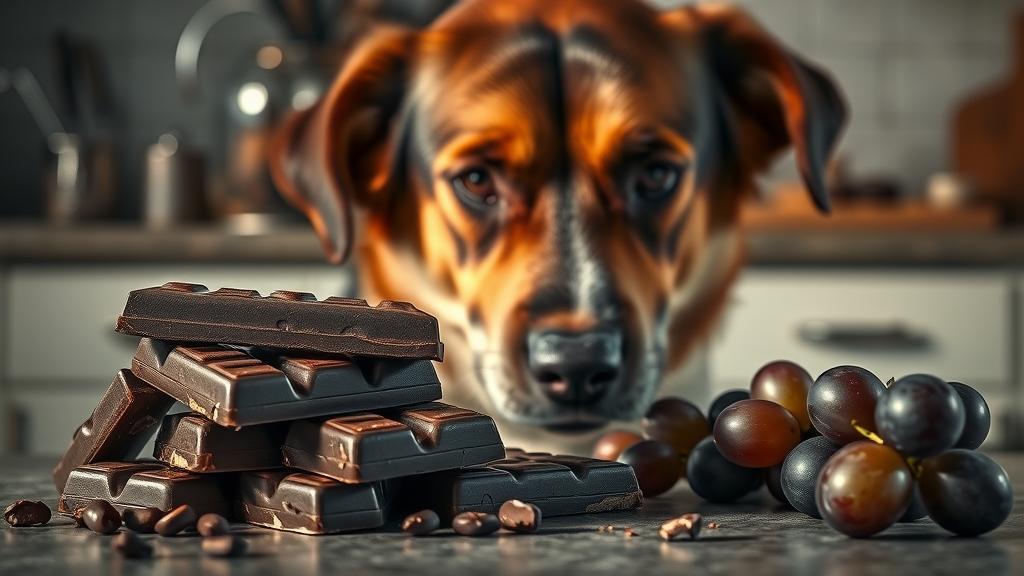
Macadamia Nuts and Macadamia Nut-Infused Treats
Though not as widely known as grapes or chocolate, macadamia nuts are highly toxic to dogs—even “macadamia nut-infused” treats can pose a deadly risk. When eaten, these nuts cause weakness, vomiting, tremors, and sometimes fever or hind limb paralysis. The exact reason for the toxicity is not fully understood, but effects can set in rapidly (within 12 hours) and persist for up to 48 hours.
Macadamia nuts often hide in cookies, snack mixes, or chocolate treats—making them a double risk if chocolate is also involved. Because even a few nuts can be dangerous, keep all nuts and nut-infused baked goods securely stored. Veterinary care is advised for any ingestion, especially if your dog shows wobbliness, shaking, or muscle tremors.
Yeast and Bread Dough: Toxic to Dogs and Often Overlooked
Unbaked yeast dough is dangerous for dogs in ways many don’t expect. When a dog eats raw dough, the yeast continues to rise inside the warm environment of the stomach, expanding and producing ethanol (alcohol) as a byproduct. This can lead to severe bloating, disorientation, vomiting, stomach upset, or potentially fatal alcohol poisoning.
Even a “small amount” of dough can cause obstruction or intoxication, making yeast dough and bread dough highly toxic to dogs. Always keep rising dough out of reach—on top shelves, behind closed pantry doors—and never feed dogs baked goods containing yeast or bread dough as a treat, no matter how much they beg.
Artificial Sweeteners: The Danger of Xylitol and Hidden Toxic Food Risks
The most dangerous sweetener for dogs is xylitol —a sugar substitute found in gum, candy, baked goods, toothpaste, and even some peanut butters. When a dog ingests xylitol, their pancreas mistakes it for real sugar and dumps insulin into the bloodstream, causing blood sugar to crash within minutes. What follows can be sudden seizures, collapse, liver failure, and death even with a tiny dose (as low as a stick of gum for a small dog).
What makes xylitol extra hazardous is that it’s often a hidden ingredient. Be sure to check labels for “artificial sweetener” or “sugar-free” before giving your dog any treat—even including peanut butter or baked goods. If you suspect your dog has consumed xylitol, it’s a true emergency: seek veterinary care immediately, as the damage happens extremely fast.
Onions, Garlic, and Alliums: Everyday Kitchen Items That Are Poisonous to Dogs
Onions, garlic, chives, and other allium family foods are dangerous for dogs, whether raw, cooked, powdered, or dried. These ingredients—common in kitchen scraps and seasoning—destroy red blood cells, leading to anemia. Even small amounts sprinkled on food, cooked into sauces, or blending into seasoned meats can be harmful. Reactions may appear as lethargy, rapid breathing, vomiting, or discolored urine (red or brown due to blood cell breakdown).
Protect your dog by keeping any form of onion, garlic, or related seasonings out of their bowl. Read labels, don’t share table food, and educate family and guests about the dangers of “hidden” alliums.
- Grapes and raisins
- Macadamia nuts
- Yeast dough and bread dough
- Onion and garlic
- Artificial sweetener (xylitol)
- Chocolate
Top 10 Most Dangerous Foods for Dogs – Signs and Symptoms Explained (watch on your favorite pet safety channel)
Toxic Food vs. Treats Dogs Can Eat: Safe Snacks vs. Poisonous to Dogs
It’s easy to feel overwhelmed when learning what foods are toxic to dogs, but there are plenty of human foods dogs can eat safely. The secret is to know the difference: stick to simple, dog-approved foods that have been proven to be non-toxic. Giving safe snacks can promote good health, enrich your dog’s diet, and build an even closer bond between you and your pet—without the anxiety of kitchen dangers.
While bread dough, macadamia nut treats, and chocolate are off-limits, many fruits and veggies can be a healthy, crunchy snack. Just remember to introduce any food slowly, with your vet’s approval, especially if your pet has a delicate digestive system or allergies.
Human Foods Dogs Can Safely Eat
Many pet owners ask, "Which human foods dogs can eat safely?" Good options include plain carrots, apples (with seeds removed), blueberries, cooked sweet potato, green beans, and lean meats with no seasoning. Peanut butter is often safe if it is free from artificial sweeteners (especially xylitol) and salt. Plain yogurt or cheese in small amounts can offer digestive support and a happy treat (as long as your dog is not sensitive to dairy).
Any new food should be given in small amounts and observed for adverse reactions. Always avoid table scraps, rich or fatty foods, or anything containing spice, seasonings, or sauces—these can quickly turn a safe treat into a toxic food risk.

List: Safe Alternatives to Toxic Food for Dogs
- Carrots (cooked or raw, sliced)
- Apples (no seeds or core)
- Blueberries
- Green beans (plain, no salt)
- Sweet potato (cooked, unseasoned)
- Plain, unsalted peanut butter (NO xylitol!)
- Cooked plain chicken or turkey
- Plain rice or cooked pasta (occasional, for bland diet use)
- Plain unsweetened yogurt or cheese (in moderation)
How to Introduce Human Foods Safely
When adding any new human food to your dog’s diet, start with small quantities. Monitor closely for signs of digestive upset, such as vomiting, diarrhea, or changes in appetite. Introduce foods one at a time so you can pinpoint any allergies or sensitivities. Before giving your dog anything outside their usual diet, consult with your veterinarian—especially for puppies, seniors, or dogs with chronic health conditions. This way, you ensure treats are safe alternatives rather than hidden risks, and expand your list of human foods dogs can eat safely.
Recognizing Symptoms of Toxic Food Poisoning in Dogs
If your dog has eaten something you suspect may be toxic, rapid recognition of symptoms is absolutely critical—acting fast can save lives. Symptoms will differ depending on the food, your dog’s size, and their unique physiology. Look for sudden changes in energy, vomiting, diarrhea, loss of coordination, rapid breathing, or signs of pain. Some toxins act within minutes; others take hours or days to show effects. Knowing what symptoms to look for is the best early-warning system a pet parent can have.
Toxic food poisoning in dogs can cause vague symptoms like drooling, loss of appetite, or an upset stomach—or dramatic signs like tremors, seizures, collapse, or bleeding. Any sudden, unexplained illness should be treated as a potential emergency. If you're ever in doubt about what foods are toxic to dogs or suspect possible exposure, call your vet or emergency animal poison control immediately.
Common Signs Your Dog Has Eaten Food That Is Toxic to Dogs
Not all dogs react the same way to toxic foods, but some signs are nearly universal. Watch for vomiting (especially if sudden or violent), drooling, staggering or coordination problems, restlessness or hyperactivity, severe lethargy, rapid respiration, diarrhea, or collapse. In some cases—like allium poisoning—it may take a day or two before red blood cell damage causes symptoms, so keep a close eye after any “kitchen mistake.” If you notice blood in urine, yellow gums, or skin/joint swelling, these can signal more advanced poisoning like liver damage or severe anemia.
Trust your instincts—if your dog suddenly acts strange after eating, or you witness them consume a food mentioned in this guide, do not wait for symptoms to worsen. Rapid veterinary attention offers the best chance of full recovery.
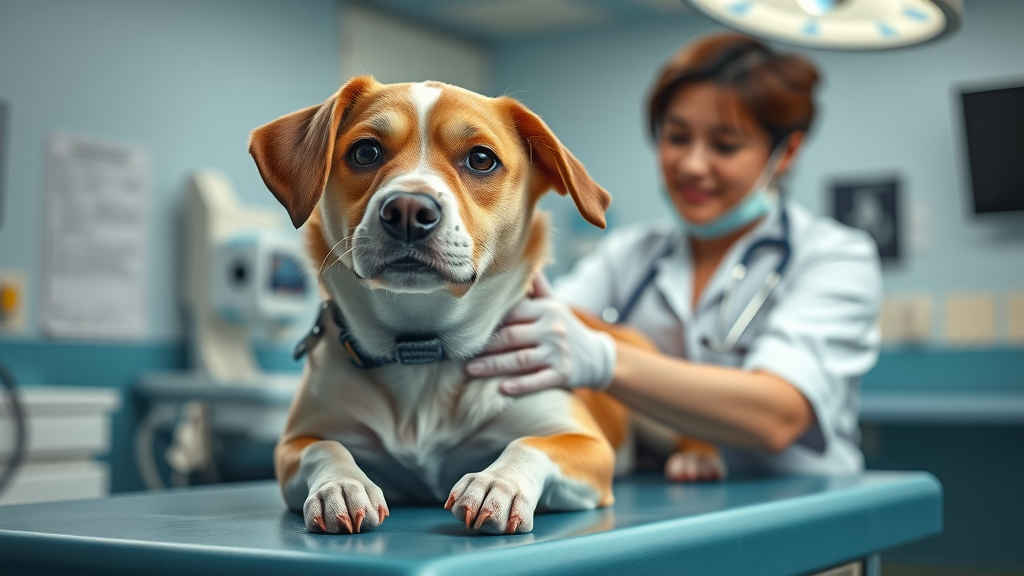
When to Seek Veterinary Care After Food Ingestion
Whenever you suspect your dog has ingested a toxic food—especially chocolate, grapes, raisins, macadamia nuts, yeast dough, onions, garlic, or any product containing xylitol—treat it as a veterinary emergency. The rule: if in doubt, get it checked out. Time is truly the most important factor in preventing serious harm. Don’t try home remedies or wait to “see if symptoms develop”—many toxins work in a delayed manner, and some antidotes are only effective within a narrow window after ingestion.
"Just a single grape or a bit of xylitol can mean life or death for some dogs." – Dr. Mia Larson, DVM
If you know what was consumed, how much, and when, relay all this information to your vet or emergency animal poison center. This speeds up treatment and protects your pet from lasting harm. Always save food packaging or wrappers, as these help professionals identify toxins and expedite care.
Dangerous Food Myths: What Isn't Actually Poisonous to Dogs?
There’s a lot of confusion about what foods are toxic to dogs and what’s merely a myth. Some foods—like peanut butter, cheese, or plain bread (fully baked)—are generally safe in moderation for most dogs. Others may be rumored safe but actually pose a risk. Misinformation can be as dangerous as exposure, so always check with a veterinary professional or reputable animal poison control resource before trying new foods.
Rumors often spread on social media or in casual conversation and may lack scientific backing. For every “I gave my dog this and he was fine,” there’s another owner with a heartbreaking story. Clear up myths with reliable information tailored to your dog’s specific needs and sensitivities.
Clarifying Confused Foods: Peanut Butter, Cheese, and More
Can dogs safely have peanut butter? The answer is usually yes— if it’s free from xylitol , salt, and added sugar. Small amounts of cheese can provide protein and calcium, but only if your dog tolerates dairy. Fully baked bread in very small amounts may be a bland treat, but raw bread dough is extremely toxic. It’s all about ingredients and context.
Most processed or seasoned foods, including lunch meats, sausages, or flavored snacks, may contain hidden onion, garlic, or artificial sweeteners. Double-check ingredient lists, and when in doubt, opt for simple, plain foods in controlled amounts.
How to Distinguish Rumor from Fact on Toxic Food
When you read or hear conflicting advice, seek out veterinary guidance and look for peer-reviewed, science-backed information. Stick to resources like ASPCA Animal Poison Control, the Pet Poison Helpline, or your own local veterinarian. Never rely on anecdotal evidence alone. Keep in mind: even foods rumored to be safe may be dangerous for your specific dog, due to allergies, medical history, or breed-related sensitivities.
When it comes to protecting your dog from poisonous foods or toxic food myths, evidence always wins over tradition. Commit to learning, keep a reference list handy, and ask questions when something seems unclear.
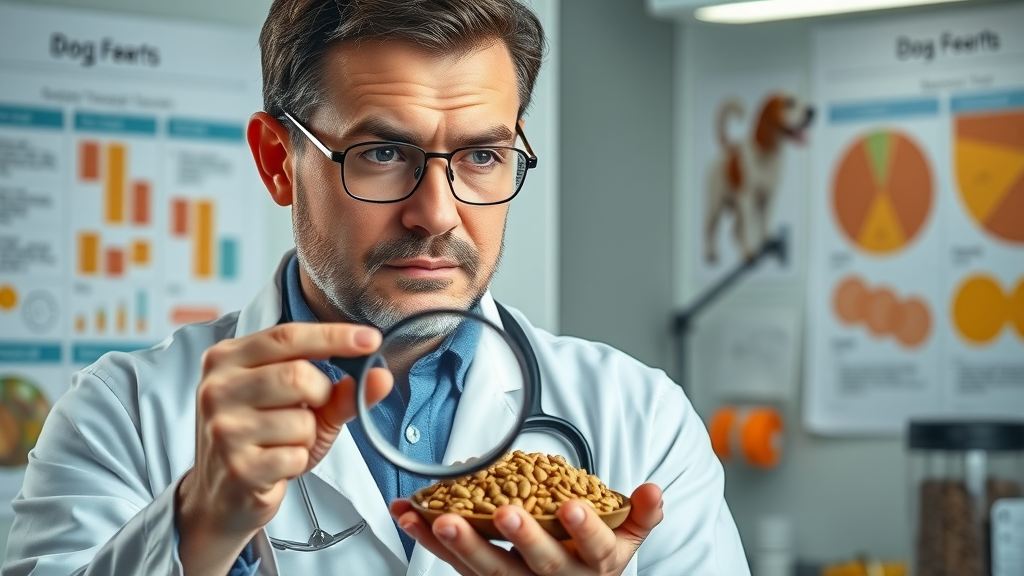
Breed Differences and Individual Variability in Reaction to Toxic Food
Not all dogs respond the same way to toxic foods. Some breeds, sizes, and even individual dogs are more sensitive to certain toxins than others. For example, small breeds, puppies, and seniors may experience more dramatic reactions due to their smaller bodies or compromised health. Similarly, genetic differences affect how efficiently a dog’s liver or kidneys filter toxins, meaning that what’s “just an upset stomach” for one dog could be fatal for another.
Some breeds with known sensitivities (like Japanese breeds to allium toxicity) require additional vigilance. Always tailor prevention and emergency response to your dog’s unique medical history, breed risk, and size.
Are Some Dogs More Sensitive to Human Foods That Are Poisonous to Dogs?
Yes—smaller dogs and toy breeds are at higher risk because a small amount of toxic food represents a much larger dose relative to their body weight. Breeds like Shiba Inu, Akita, and certain retrievers can be especially vulnerable to grapes and raisins or allium toxicity. Age also matters: puppies and elderly dogs have weaker immune systems and cannot process toxins efficiently.
Always consult your veterinarian for breed-specific guidance and create a pet safety plan based on your dog’s size, weight, and health status.
Breed List: Most Susceptible and Least Susceptible Breeds
- Most Susceptible Breeds: Yorkshire Terrier, Shih Tzu, Dachshund, Bichon Frise, Akita, Shiba Inu, Pomeranian, Chihuahua, Miniature Poodle, Toy Poodle
- Least Susceptible Breeds: Larger breeds like Labs, Golden Retrievers, Newfoundlands may tolerate slightly higher doses but are still at risk. No breed is immune!
Emergency Response: What to Do if Your Dog Eats Something Poisonous
Step-by-step response is essential if your dog ingests a toxic food—every minute counts. If you saw your dog eat something dangerous for dogs or just suspect they did, stay calm but act quickly. Prevent further access to the substance, note what was eaten and how much, and seek veterinary help immediately.
Some toxins, like xylitol and grapes, require immediate attention even in small amounts. Never induce vomiting without consulting a vet; some substances, if brought back up, can cause further harm (like caustic foods or bones). Knowing how to react will protect your pet’s life.
Step-by-Step Actions for Suspected Toxic Food Ingestion
- Remove your dog from the source of the toxic food.
- Note what was ingested, how much, and when.
- Keep food packaging or remnants for the vet to analyze.
- Contact your vet or animal poison control immediately—share all details.
- Follow your vet's instructions—do NOT try home remedies unless advised.
- Transport your dog to emergency care if symptoms develop or your vet tells you to.
What Information to Provide Vets in Case of Toxic to Dogs Emergencies
- Name and amount of food consumed (be precise—estimate by grams or volume if possible)
- Packaging or ingredient list (especially for name-brand items or mixed foods)
- Time of ingestion
- Symptoms observed (if any)
- Breed, age, and weight of your dog
This information helps your vet determine the best and fastest treatment, increasing your pet’s chance of a full recovery.
Prevention Strategies: Keeping Toxic Food and Poisonous Foods Away from Dogs
Prevention is every pet parent’s best tool. Proactively remove toxic foods from your dog's reach, educate your household, and set up routines that minimize opportunity for accidents. Pet-proof your kitchen and eating areas, and never underestimate a curious or clever pup's ability to snatch a dropped item or counter surf for hidden snacks.
Consider prevention an essential part of dog ownership. It protects not only your dog, but your wallet, peace of mind, and the emotional health of your family. Stay vigilant and make pet safety a household priority.
Best Practices for Pet-Proofing Your Kitchen from Toxic Foods
- Store all human food out of reach and in sealed containers.
- Install childproof locks or latches on low cupboards where food is kept.
- Never leave rising bread dough or baked goods unattended on counters.
- Clean up spills, crumbs, and dropped food immediately.
- Remind children and guests never to feed your dog from the table.
- Post a visible list of foods poisonous to dogs in your kitchen as a daily reminder.
Training Dogs Not to Eat Toxic Food or Poisonous Treats
- Teach a strong “leave it” and “drop it” command.
- Provide distraction toys and treats in safe environments away from the kitchen.
- Supervise pets during parties or gatherings when food is accessible.
- Reward your dog for ignoring dropped or forbidden foods.
- Practice positive reinforcement so compliance is second nature.
FAQs: What Foods Are Toxic to Dogs?
Can one bite of a poisonous to dogs food really harm my pet?
Yes, for certain toxic foods—like grapes, raisins, xylitol, or dark chocolate—even a single “bite” can cause rapid and severe problems such as kidney failure, low blood sugar, seizures, or organ damage. Always treat even small amounts as potential emergencies and get professional advice when in doubt.
What should I keep out of reach to prevent toxic food incidents?
Common foods you must store securely include chocolate, candy, artificial sweeteners (especially xylitol), grapes/raisins, onions, garlic, alcohol, raw bread dough, macadamia nuts, and anything containing these ingredients. Regularly inspect your pantry, fridge, and trash cans for potential risks, and remind the whole household to lock up all “people food.”
How do I recognize the early signs of food poisoning in my dog?
Early signals include vomiting, diarrhea, excessive drooling, stumbling or weakness, tremors, restlessness, loss of appetite, and sudden behavior changes. If your dog shows any of these after eating something questionable, call your vet right away. The sooner you act, the better the outcome.
What is the most toxic food for a dog?
Answer: The most toxic food for a dog is typically xylitol, an artificial sweetener, followed closely by grapes and raisins, due to their extremely rapid and severe effects even in small doses.
What is the deadliest poison for dogs?
Answer: The deadliest poison for dogs is often considered to be xylitol, since it leads to rapid insulin release, hypoglycemia, seizures, liver failure, and death if untreated.
What is the #1 meat you should never feed your dog?
Answer: Processed meats like bacon and sausages are high-risk due to salt, fat, and frequent inclusion of onion or garlic, which are toxic to dogs.
Which fruit is poisonous to dogs?
Answer: Grapes and raisins are the most widely known fruits that are poisonous to dogs, with ingestion even in small quantities causing sudden and severe kidney failure.
How Vets Treat Dogs After Ingesting Poisonous Foods – See a Live Demonstration (find on leading pet care channels)
Essential Steps: How to Create a Safe Home for Your Dog and Avoid Foods Toxic to Dogs
- Store all human food out of reach and in sealed containers.
- Teach family/guests not to feed table scraps.
- Post a list of foods poisonous to dogs in the kitchen.
- Commit to regular training so your dog doesn't scavenge.
Quick Checklist for New and Experienced Pet Parents
- Do a kitchen sweep and lock up all toxic foods.
- Draw up a family “no table scraps” rule and teach all guests.
- Keep emergency numbers for your vet and animal poison control handy.
- Refresh your dog’s “leave it” and recall training every season.
- Monitor trash cans, compost piles, and outdoor food sources, too.

Further Reading, Support, and Community: Stay Informed and Keep Your Dog Safe
Resources: Poison Control, Veterinary Advice, and Helpful Tools
Maintain a list of trusted resources and contacts for animal poison emergencies, including your vet, national poison control lines (like the ASPCA or Pet Poison Helpline), and reputable websites that track food recalls and toxic food alerts. Consider joining a community of pet owners who share updates, experiences, and new research. Ongoing education is your best defense against accidental poisonings.
Join the Movement: Working Together to Prevent Toxic Food Incidents
Share this article, participate in local pet safety events, and encourage all pet parents to spread the word about what foods are toxic to dogs. The more we all know, the safer everyone’s furry family members will be!
"When in doubt, keep it out of the bowl. Your caution could save a life." – Anonymous Pet Lover
Key Points Recap: Major Takeaways on What Foods Are Toxic to Dogs
- Foods toxic to dogs include chocolate, grapes, macadamia nuts, yeast dough, and xylitol.
- Even trace amounts of certain foods can be fatal to some dogs.
- Prevent access, educate your household, and act fast in an emergency.
Never Miss a Safety Update: Get the Latest Toxic Food Alerts and Pet Wellness Tips
📧 One email. All the value. Join thousands of pet parents who get our monthly roundup of pet care tips, product reviews, and giveaways.
Act now—pet-proof your home, train your family, keep emergency numbers ready, and stay informed. Your vigilance is your dog's best defense against toxic food dangers.
Ensuring your dog’s safety involves being aware of common human foods that are toxic to them. For instance, onions and garlic contain compounds that can damage a dog’s red blood cells, leading to anemia. Even small amounts, whether raw or cooked, can be harmful. ( dogstrust.org.uk )
Similarly, chocolate is hazardous due to theobromine, a stimulant that dogs cannot metabolize effectively. Ingesting chocolate can result in vomiting, diarrhea, increased heart rate, seizures, and even death. ( battersea.org.uk )
Grapes and raisins are also dangerous, as they can cause sudden kidney failure in dogs. Even a small quantity can be toxic, leading to symptoms like vomiting, lethargy, and abdominal pain. ( dogstrust.org.uk )
Another common household item to avoid is xylitol , an artificial sweetener found in sugar-free gum, candies, and some baked goods. Xylitol can cause a rapid release of insulin in dogs, leading to hypoglycemia (low blood sugar), seizures, liver failure, and even death. ( chewy.com )
Macadamia nuts are particularly toxic to dogs, causing symptoms such as weakness, vomiting, tremors, and hyperthermia. The exact cause of toxicity is unknown, but even small amounts can lead to severe reactions. ( dogstrust.org.uk )
Alcohol is another substance that should never be given to dogs. Even small amounts can cause vomiting, diarrhea, coordination problems, breathing difficulties, coma, and potentially death. ( stellaandchewys.com )
Avocados contain persin, a substance that can cause vomiting and diarrhea in dogs. All parts of the avocado plant, including the fruit, pit, leaves, and bark, are toxic to dogs. ( dogstrust.org.uk )
Yeast dough poses a risk as it can expand in a dog’s stomach, leading to bloating and potential alcohol poisoning from the fermentation process. This can cause severe discomfort and life-threatening complications. ( newsweek.com )
Salt and salty snacks can lead to excessive thirst, urination, and sodium ion poisoning in dogs. Symptoms include vomiting, diarrhea, tremors, elevated body temperature, and seizures. ( consumerreports.org )
Caffeine , found in coffee, tea, and certain sodas, is also harmful to dogs. It can cause restlessness, rapid breathing, heart palpitations, muscle tremors, and bleeding. ( stellaandchewys.com )
Being vigilant about these foods and ensuring they are kept out of your dog’s reach can help prevent accidental poisoning and keep your furry friend healthy and safe.
 Add Row
Add Row  Add
Add 



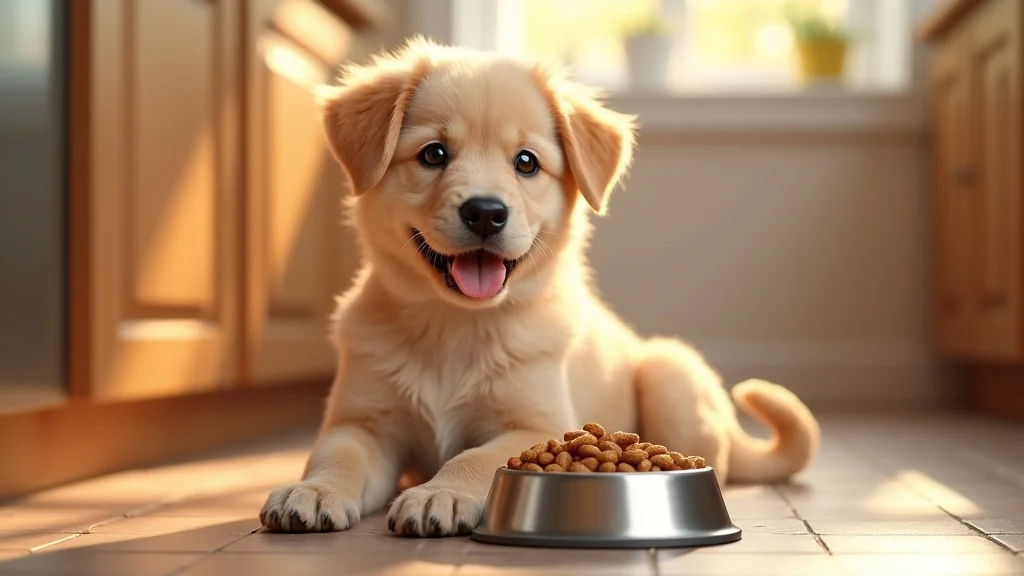
Write A Comment